Accuracy or Total Error?
14. mars 2023
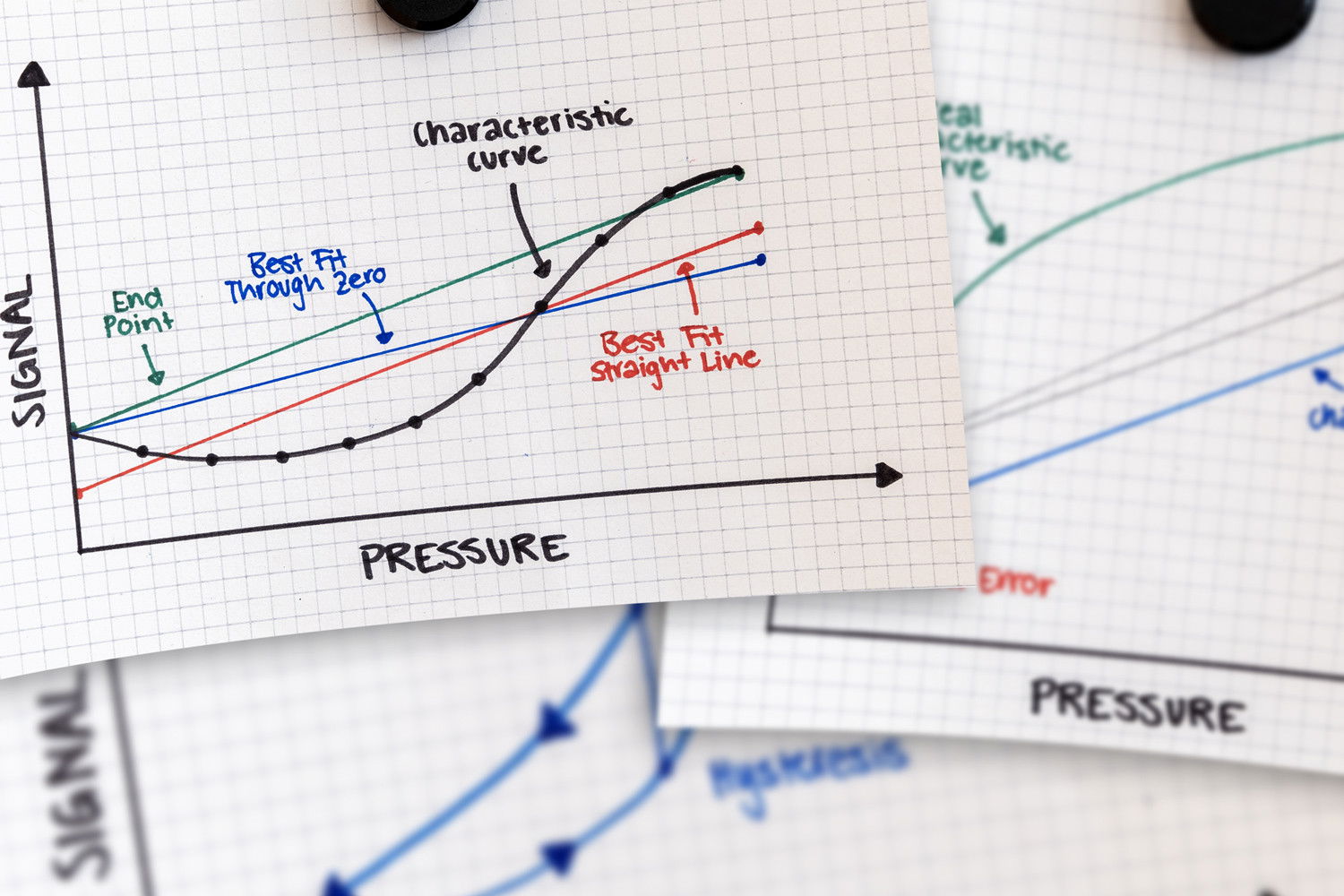
When trying to choose the right pressure transmitter, sooner or later you will have to take a look at the data sheets. Data sheets are provided by manufacturers and might be seen as a product’s business card, in that they are designed to afford an overview of the product’s properties and capabilities. It is worth taking a look at the details about performance or the specification on the data sheet, especially if you want to compare different manufacturers or potential suppliers.
Configuration options such as electrical connections or pressure connections are usually stated in a clear and easy-to-understand manner. Trickier, however, are the details about accuracy and stability or, in short, the device’s performance. We wanted to shed a little light on these dense thickets of information and clarify various details.
Which specification is more important – accuracy or total error?
When purchasing a pressure transmitter, it is normally the accuracy that catches your eye at first. But accuracy is only one part of a higher-level concept: total error. The accuracy alone does not give any information about how large the total error actually is. This depends on various factors, such as the conditions under which the pressure sensor is used.
Total error is made up of three elements: adjustable errors, accuracy and thermal effects.

Accuracy
Accuracy is a frequently misunderstood term, applied to a variety of different values or incorrect values. The inconsistencies begin with how the term is defined. In the IEC 61298-2 standard, terms related to accuracy such as non-linearity, pressure hysteresis and non-repeatability are explained. However, it does not define whether adjustable errors such as zero point error and span error also play a role. This varies from manufacturer to manufacturer. KELLER generally cites the “actual accuracy”, including adjustable errors. In older product series, this may not be the case and zero point error and span error might be accounted for separately.
The figures for typical and maximum accuracy are an additional point of discussion. When citing typical accuracy, it is rarely specified what exactly “typical” means. It can be assumed, however, that the distribution of typical accuracy follows the normal Gaussian distribution. Some manufacturers cite both the typical and maximum values. Due to KELLER’s many years of experience in manufacturing pressure transducers and transmitters, the term “typical accuracy” is used synonymously with “accuracy based on experience”. Where possible, KELLER avoids citing the typical accuracy and gives the maximum accuracy instead. This guarantees that every KELLER product is within the specified accuracy class.
There are three specifications that come under the umbrella concept of accuracy:
- Non-linearity/linearity
- Pressure hysteresis
- Non-repeatability/repeatability
- (adjustable errors)
Non-linearity/linearity describes the largest (positive or negative) deviation in the characteristic curve from an ideal reference line. The reference line can be determined using three different methods. KELLER normally uses a best fit straight line:
- End point: The reference line runs through the start and end points.
- Best fit through zero: The straight line is positioned so that it runs through the start value and the largest deviation in the characteristic line takes the smallest possible value.
- Best fit straight line: The reference line is positioned so that the maximum positive and negative deviation are as small as possible. This method delivers the smallest error value.

Each method leads to different results, however, these all describe the same characteristics. For this reason, it is important that manufacturers publish the methods they have used and specify the resultant non-linearity.
Pressure hysteresis describes the maximum deviation in the characteristic curve between the pressure increase and pressure drop at a constant temperature. Unlike other errors, pressure hysteresis cannot be compensated for and is a result of physical properties of the pressure sensor/pressure chip.

Non-repeatability (repeatability) describes the maximum deviation across multiple measurements (at least three) with an identical measurement configuration, temperature and applied pressure. Non-repeatability is also an error that cannot be compensated for.
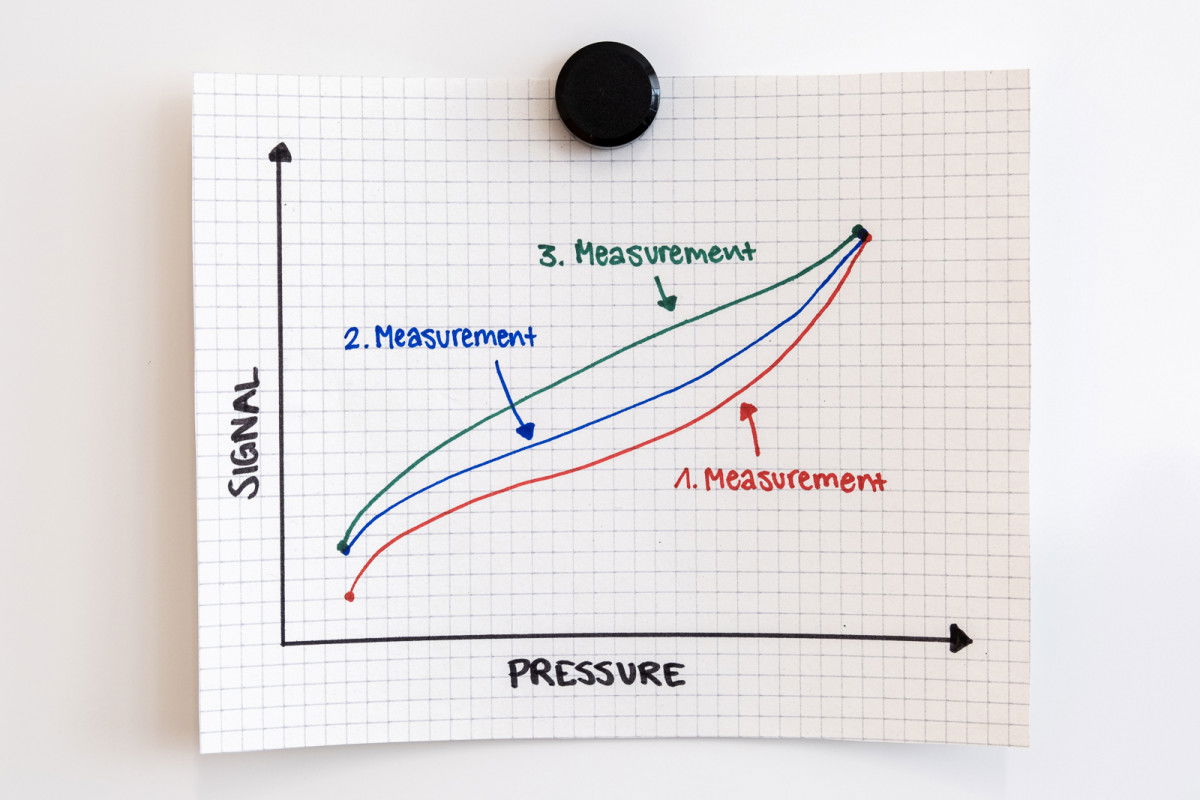
Adjustable errors
Deviation in the zero point (start of the measuring range) and end point (end of the measuring range), also known as zero point deviation and amplification deviation, fall under the category of adjustable errors.
As mentioned above, these two specifications are usually factored into accuracy but might also be accounted for as a separate error.

Thermal effects
The specifications for accuracy apply at room temperature, or rather at a constant temperature, that was present at the time of production (approx. 25 °C). In reality, however, pressure transmitters are often used outside of their production conditions. To identify these deviations, the thermal behaviour of the pressure transmitter is recorded during production.
Temperature hysteresis, much like pressure hysteresis, describes behaviour under the same pressure and with the same measurement configuration as the temperature rises and falls. This error cannot be compensated for. KELLER does not list this value explicitly, but includes it within the total error band.
The second value is known as the temperature error. In practice, the errors for this value are given as temperature coefficient of the zero point (TCzero) and the span (TCspan) (e.g. 0,2 %FS / 10 K). To calculate the temperature error over the entire medium/operating temperature range, the errors must be added up operating on the assumption of the production temperature.
For example:
Operating temperature range -10…80 °C
TC zero point 0,1 %FS / 10 K
TC span 0,1 %FS / 10 K
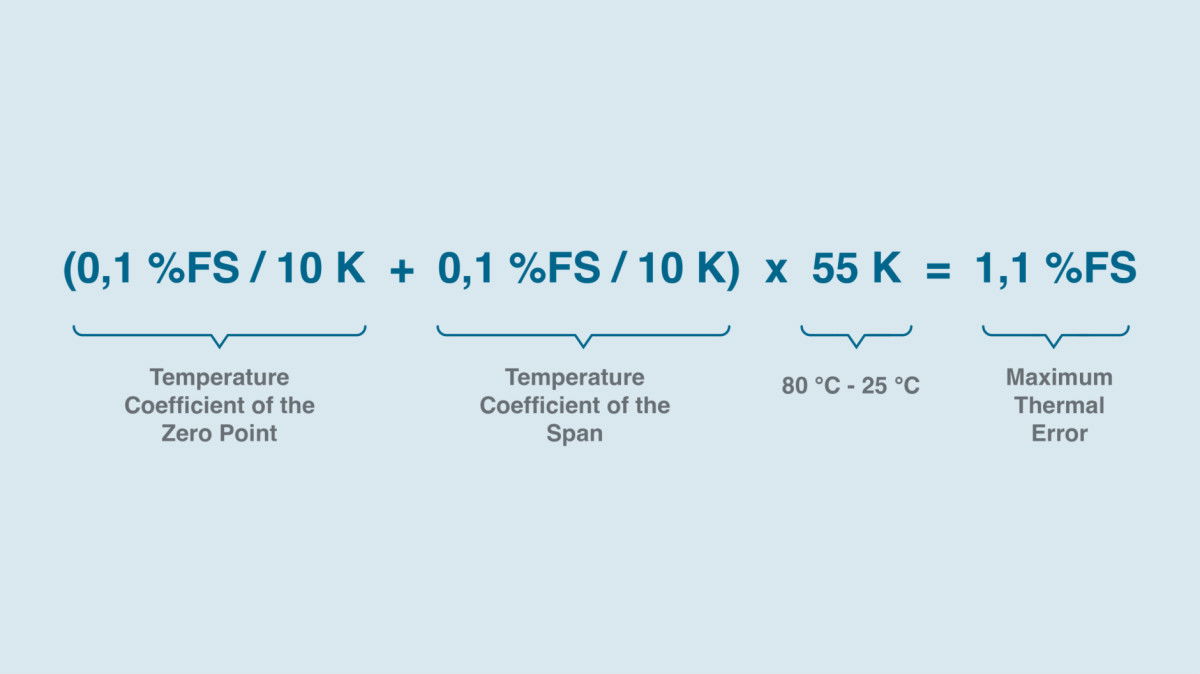
Calculating the total error band
The sum of the accuracy, thermal effects and adjustable errors gives the total error band. In this way, the behaviour of the pressure transmitter is broken down into one number (or error band) and can ideally be compared with other manufacturers.
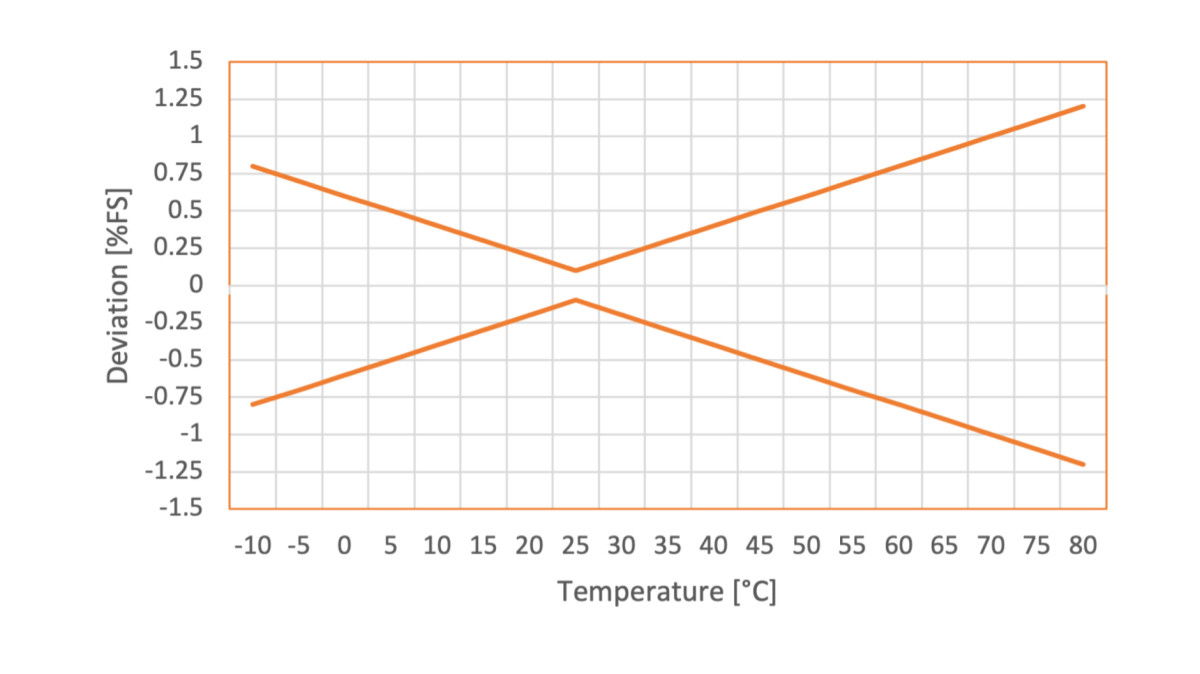
TEB of example calculation
The following graph shows the total error band of the series 23SX.
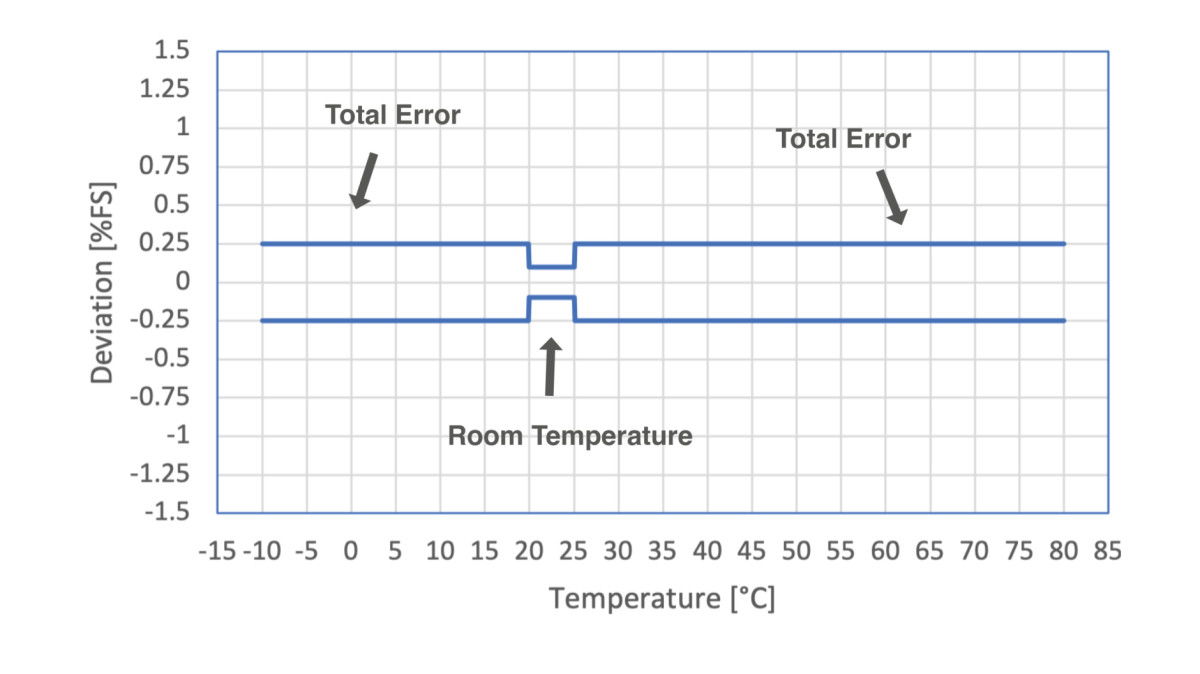
TEB of 23SX
Conclusion
- It isn’t always made simple for the user
- Read the small print and compare like with like
- The lowest figure doesn’t always indicate the highest-quality pressure transmitter
- KELLER tries to make its specifications as customer-friendly and honest as possible
- If, in spite of this, you still have any questions or anything is unclear, consult the sales engineer



